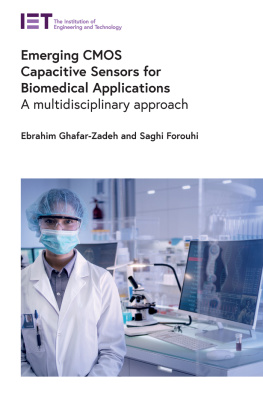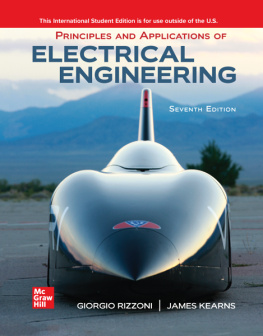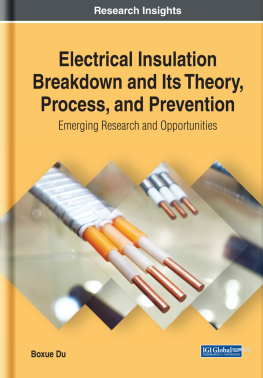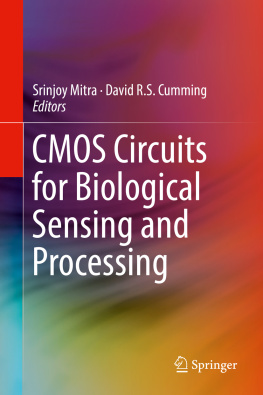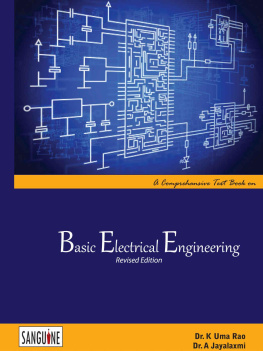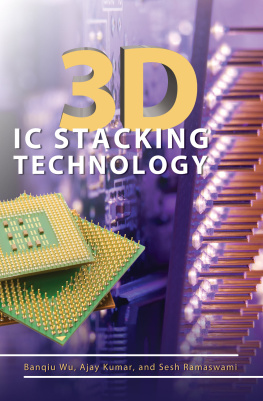CMOS Past, Present and Future
First Edition
Henry H. Radamson
Jun Luo
Eddy Simoen
Chao Zhao

Copyright
Woodhead Publishing is an imprint of Elsevier
The Officers Mess Business Centre, Royston Road, Duxford, CB22 4QH, United Kingdom
50 Hampshire Street, 5th Floor, Cambridge, MA 02139, United States
The Boulevard, Langford Lane, Kidlington, OX5 1GB, United Kingdom
Copyright 2018 Elsevier Ltd. All rights reserved.
No part of this publication may be reproduced or transmitted in any form or by any means, electronic or mechanical, including photocopying, recording, or any information storage and retrieval system, without permission in writing from the publisher. Details on how to seek permission, further information about the Publisher's permissions policies and our arrangements with organizations such as the Copyright Clearance Center and the Copyright Licensing Agency, can be found at our website: www.elsevier.com/permissions.
This book and the individual contributions contained in it are protected under copyright by the Publisher (other than as may be noted herein).
Notices
Knowledge and best practice in this field are constantly changing. As new research and experience broaden our understanding, changes in research methods, professional practices, or medical treatment may become necessary.
Practitioners and researchers must always rely on their own experience and knowledge in evaluating and using any information, methods, compounds, or experiments described herein. In using such information or methods they should be mindful of their own safety and the safety of others, including parties for whom they have a professional responsibility.
To the fullest extent of the law, neither the Publisher nor the authors, contributors, or editors, assume any liability for any injury and/or damage to persons or property as a matter of products liability, negligence or otherwise, or from any use or operation of any methods, products, instructions, or ideas contained in the material herein.
Library of Congress Cataloging-in-Publication Data
A catalog record for this book is available from the Library of Congress
British Library Cataloguing-in-Publication Data
A catalogue record for this book is available from the British Library
ISBN: 978-0-08-102139-2 (print)
ISBN: 978-0-08-102140-8 (online)
For information on all Woodhead publications visit our website at https://www.elsevier.com/books-and-journals

Publisher: Matthew Deans
Acquisition Editor: Kayla Dos Santos
Editorial Project Manager: Gabriela D. Capille
Production Project Manager: Joy Christel Neumarin Honest Thangiah
Cover Designer: Christian J. Bilbow
Typeset by SPi Global, India
Contributors
H.H. Radamson
Institute of Microelectronics of Chinese Academy of Sciences (IMECAS)
University of Chinese Academy of Sciences (UCAS), Beijing, PR China
K.P. Jia
Institute of Microelectronics of Chinese Academy of Sciences (IMECAS)
University of Chinese Academy of Sciences (UCAS), Beijing, PR China
Y. Li Imec, Leuven, Belgium
J. Luo
Institute of Microelectronics of Chinese Academy of Sciences (IMECAS)
University of Chinese Academy of Sciences (UCAS), Beijing, PR China
E. Simeon Imec, Leuven, Belgium
G. Wang
Institute of Microelectronics of Chinese Academy of Sciences (IMECAS)
University of Chinese Academy of Sciences (UCAS), Beijing, PR China
X. Wang
Institute of Microelectronics of Chinese Academy of Sciences (IMECAS)
University of Chinese Academy of Sciences (UCAS), Beijing, PR China
W. Wang
Institute of Microelectronics of Chinese Academy of Sciences (IMECAS)
University of Chinese Academy of Sciences (UCAS), Beijing, PR China
C. Zhao
Institute of Microelectronics of Chinese Academy of Sciences (IMECAS)
University of Chinese Academy of Sciences (UCAS), Beijing, PR China
Preface
We are in some way or other affected by the enormous impact of integrated electronics and integrated circuits (ICs). They have changed virtually all aspects of our social and professional lives. CMOS is the main unit in ICs and its design and structure have undergone an evolution for many decades to follow the historical Moore's Law.
This book is written in a notably understandable language for readers and provides a good insight from the basics of CMOS to its development toward the advanced transistor structures.
The book is dedicated to the students and researchers in the field of electrical engineering, who desire to learn more about the CMOS technology.
Acknowledgments
Professor Anders Halln from KTH is acknowledged for his scientific discussions. Many contributors from the Chinese Academy of Sciences have been involved with this book. Our special gratitude to Dr. Huilong Zhu, Dr. Huaxiang Yin, and Dr. Jiang Yan for their remarkable contributions and discussions to the all-last high-k/metal gate integration part. We express our appreciation to Miss Dan Zhang, Mr. Ningyuan Duan, Miss Shujuan Mao, Mr. Jinbiao Liu, and Miss Xuewei Zhao for their valuable help.
Basics of metaloxidesemiconductor field-effect transistor (MOSFET)
H.H. Radamson Institute of Microelectronics of Chinese Academy of Sciences (IMECAS), Beijing, PR China
University of Chinese Academy of Sciences (UCAS), Beijing, PR China
Abstract
This chapter provides an overview of the basics of MOSFETs for logic and analog applications. It begins with a historical survey of MOSFETs from the time when all started then a focus spends on the MOS structures and its operation modes. Through these discussions, different applied voltages, band diagrams and figures of merit of transistors have been explained. Later, transition from classical planar transistors to three-dimensional FinFET is described. The origin of short channel effects and how to modify the transistor architecture to exercise control over the carrier transport in the channel region are also presented.
Keywords
MOSFET; FinFET; Transistor physics; Short channel effect
1.1 Introduction
MOSFETs are the brick units of integrated circuits (ICs) which are used in many devices in our daily life. They are being used for analog and digital applications. The latter application is for a logic device where the transistor acts as a switch and the performance is qualified with switching speed and switching energy. Since the MOSFET structure has been downscaled in size according to Moore's law, the density and switching speed of transistors have enhanced exponentially where the switching energy has reduced in a similar manner. This evolution of MOSFET structures finally resulted that the planar design was abandoned to three-dimensional (3D) one providing a remarkably better control on the parasitic resistances and capacitances.
The idea of operational field effect transistors (FETs) extends to a US patent submitted by Julius Edgar in 1925; meanwhile, the discovery of MOSFETs by Dawon Kahng and Martin Atalla at Bell labs emerged late in the 1950s. In the beginning, the gate material in the transistors was usually metals, for example, Al, which led to a Metal Oxide Semiconductor abbreviation for such devices. However, later, heavily doped poly-Si was used as the standard gate material due to its high thermal stability without reacting with gate oxide. Nowadays, the new research introduces the metal gate material to be reused when SiO2 gate oxide was substituted with more advanced high-k dielectrics.



